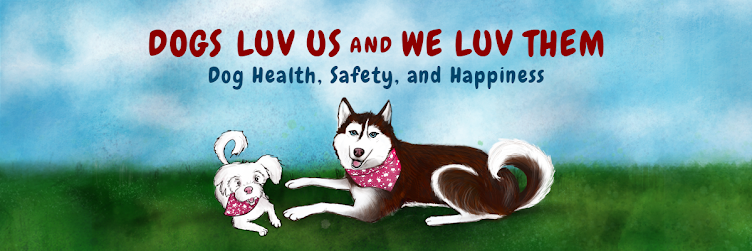 |
| Phoebe encounters desert wildflowers and a Barrel cactus |
Before you add flowers, plants, shrubs or evergreens to your home or landscape make sure they are safe for pets to be around. If not, place them well out of reach or don’t include them at all. WedMD (www.webmd.com), an online health information organization, reported that in 2012 more than 100,000 cases of pet poisoning were reported in the U.S., some of which included poisoning due to ingesting plants that are harmful to pets. The below list of pet-hazardous plants may seem lengthy, but it’s actually a short list of common garden and house plants that can pose a danger to your dog. There are many hundreds of plants that are known to be dangerous to dogs.
If your dog
ingests all or part of a poisonous plant it can cause adverse reactions such as;
vomiting, diarrhea, tremors, change in urine color, oral irritation or burning,
excessive drooling, difficulty swallowing, and even liver failure or death in more
serious cases.
Below is a partial list of common plants,
shrubs, and flowers that are hazardous to dogs.
Some of them may already be lurking in your own backyard.
PARTIAL LIST OF PLANTS KNOWN TO BE
HAZARDOUS TO DOGS:
Crocus
Cyclamen
Daffodils,
Narcissus, Paperwhites
Hyacinth
Tulips
Iris
Primrose
Dahlia
Azalea and
Rhododendron
Peony
Kalanchoe
Hosta
Hydrangea
Lantana
Oleander
Larkspur
Begonia
Sweet Potato
Vine
Tomato plants
Geranium
Wisteria
Yarrow
Portulaca
Gladiolus
Hibiscus
Rose of
Sharon
Foxglove
(the heart medicine Digitalis is made from this plant!)
Morning
Glory
Vinca
Several
varieties of Daisy and Chrysanthemum
Boxwood and
Privet Hedge
Buttercups
Gardenia
Various
types of Carnations
Chamomile
Aloe Vera
Elephant’s
Ear (Alocasia, Caladium)
Dieffenbachia
Dumbcane
Eucalyptus
Jade plant
Amaryllis
Ambrosia
Mexicana (a.k.a. Jerusalem Oak)
Bittersweet
Several
varieties of Holly
Several
varieties of Yew
Several
types of Lily’s, including Calla Lily and Peace Lily
Baby’s
Breath
Several
types of Bird of Paradise
Several
varieties of Ivy
Sago Palms
Yucca
Various
types of Onion plants (Onion in general is toxic to dogs)
Stems,
leaves, and seeds of several common fruit trees can also be toxic to pets.
(Sources: American Society for
the Prevention of Cruelty to Animals (ASPCA), The Humane Society of the United
States, WebMD)
Rather than
letting your dog randomly chew sticks or leaves he finds around the yard or
while out on walks, it’s safer to always have a ready supply of really
appealing chew toys from the pet store on hand.
My dogs love Kong or Nylabone chew toys, especially the ones that are
flavored with chicken. They usually last
a long time too. If you are uncertain
about a particular plant’s potential danger to pets, ask your Veterinarian or check
out the ASPCA or Humane Society of the U.S. web sites:
You
can download a .pdf of the Humane Society’s list of plants that can be
poisonous to pets at:
If you think your pet has ingested a flower or plant that is poisonous, contact your local veterinarian or emergency animal hospital immediately. You can also contact the ASPCA’s 24-hour emergency poison hotline at 1-888-426-4435.
Enjoy the beauty of Spring with your dogs safely!


No comments:
Post a Comment